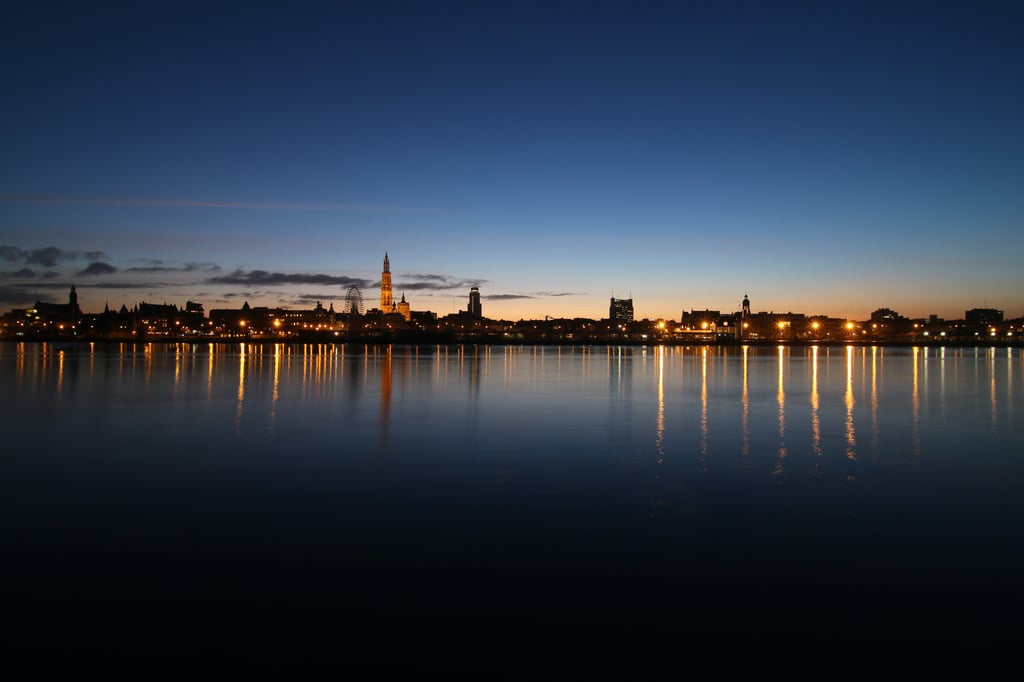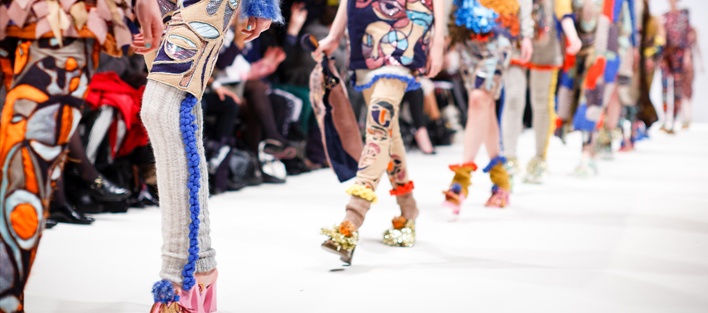Business economic impact measurement of the fashion industry in Antwerp
The glamour, excitement and creativity of the world of fashion have always appealed to the imagination. But the fashion industry comprises more aspects than solely the designing process and fashion shows. Worldwide more than 870,000 companies are involved in the process of whole-sale, retail and manufacturing, representing a turnover of about 562 billion euros in the past three years. Within this globally spread industry of fashion, a small but nonetheless significant role is played by Flanders, and the city of Antwerp in particular. In this series, based on a study conducted by Antwerp Management School, we will discuss the impact and economic value of fashion in Antwerp, and highlight the importance of the fashion industry within the local and global economy.
To measure the business economic impact of fashion companies located in Antwerp, Antwerp Management School cooperated with ModeMuseum, the world renowned Antwerp fashion museum of the Province of Antwerp, and Rebel Groups Advisory Belgium to collect different statistical data. When talking about business economic impact, we specifically mean the amount of independent entrepreneurs, the amount of employers and employees, the realized turnover, and the realized added value.
Method
The used research method was similar to a previous research on business economic impact of the creative industries, conducted by Antwerp Management School in 2013 and commissioned by Flanders DC, Antwerp Management Competence Center of Creative Industries. Main sources were the Bel-First database and data of the Civil Service for Social Security. Comparing top-down and bottom-up data for the subsector of creation gives an accurate approach of the business economic situation in Antwerp.
For the subsectors of distribution and trade we could not obtain sufficient bottom-up business economic information to compare the top-down data with. We did, however, obtain data about the amount of businesses and stores in the city of Antwerp. Through the same method, Flanders DC collected similar data for the complete fashion industry in Flanders, which gave us the possibility to analyze the share of Antwerp fashion companies in the Flemish fashion industry.
Research
According to these data, 993 clothing and shoe stores were located in the city of Antwerp in 2013, 31% of them being branches of fashion chains. As research show, large companies and chains mostly have their head quarters located outside of city centers, and therefore aren’t traceable within our available data. Remarkable is the fact that 57% of the stores are located in the area with postal code 2000, so in the middle of the city centre. In total 564 stores are to be found in the heart of the city. 42% of these stores turn out to be part of fashion chains. Therefore, our research results show only a fraction of what consumers spend in Antwerp and how many people are actually employed in the fashion sector in Antwerp.

Results
At first sight, it seems the share of Antwerp fashion within the total Flemish fashion sector is relatively small. This has several reasons, the most important one being that, as stated before, large companies usually don’t establish their head quarters in a city centre. The so-called principle of Pareto can be applied to the fashion industry: only a few large companies represent the major part of the total realized employee number, turnover, and added value. However, 30% of the companies and factories in the subsector of creation are located in Antwerp. As our research shows, these companies only take in a small part of the total employee number, turnover and added value, but as we will see later, they are very important for the reputation of Antwerp as a fashion city.
Segmentation
To get a better idea of what these results mean, we also measure the business economic impact of the separate aspects of the Antwerp fashion industry. We can discern four main segments based on price and product: independent designers, luxury fashion brands, middle segment, and larger fashion chains. All of these segments have their own production method and customer value, and the companies are being organized in a different manner, varying from micro to chain companies.
The measurement confirms what we had deduced from previous results: large fashion chains represent the major part of the business economic impact of the Antwerp fashion industry. 46% of the total turnover goes to the chain companies, whereas only 24% goes to the middle segment, 8% to independent designers, and 5% to luxury brands. Of the total amount of employees, 60% is employed in the chain companies, and only 6% is working for the independent designers. We can see the same proportions in terms of the added value of the different segments. Of the total added value, 44% is realized by the fashion chains, 25% by the middle segment, and 9% by the independent designers. The segmentation thus gives us a better idea of how employment is spread over the different sorts of fashion companies. A small amount of companies turns out to play a major role within the industry.
Conclusion
In 2013, the head quarters of 1407 fashion companies were located in Antwerp. They provided 4808 fulltime workplaces, and realized about 1.3 billion euros of turnover, as well as 300 million euros of added value. Antwerp is mostly an attraction pool for companies within the creative sector of the fashion industry, such as designers and pattern designers. 30% of all Flemish companies within the creative sector is located in Antwerp. Nevertheless, as stated before, only 10% of the Flemish fashion companies have their head quarters in the city.
The leading part within the fashion industry is played by only a few large companies: 2% of all the Antwerp fashion companies provides 60% of all employees, and 44% of the total added value. The middle segment comprises 15% of all fashion companies, but provides 20 to 25% of all workplaces, turnover and added value. From a business economic perspective, independent designers play a relatively small, but significant role: with 10% of the total amount of companies, they still realize 6% of the employees, and 9% of the added value. Besides, independent designers and luxury brands turn out to realize the highest added value per employee, which indicates their specialized labour in comparison to other fashion subsectors.
Do you want to know more? In part 1 of the series, we take a look at these five separate components of the Antwerp fashion companies, and the direct and indirect impact of the fabulous fashion industry on the city of Antwerp. Read it here!


